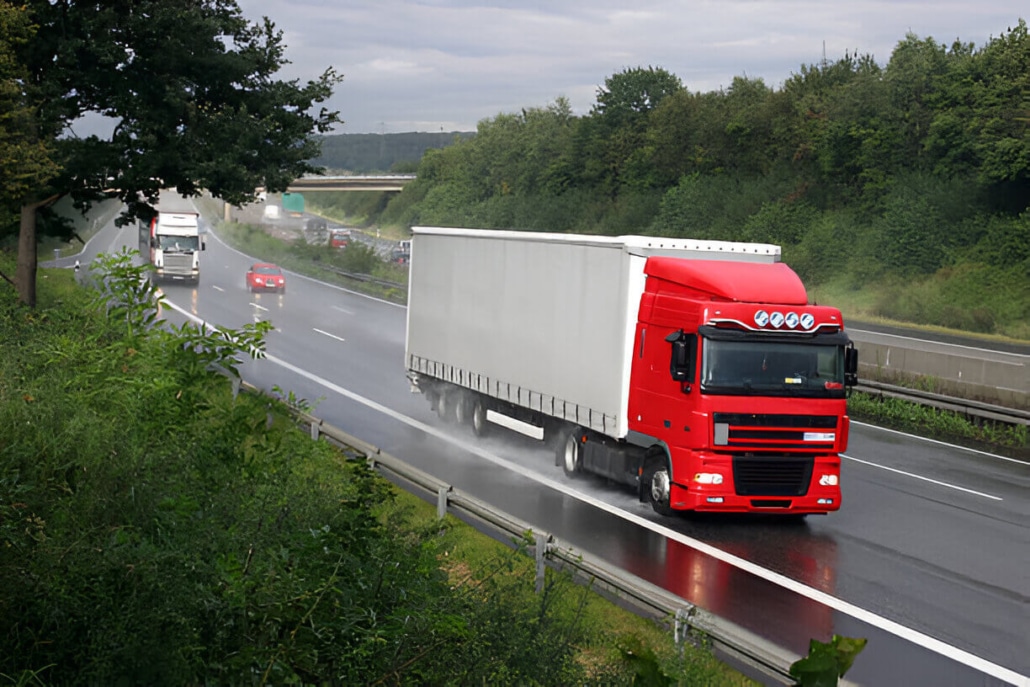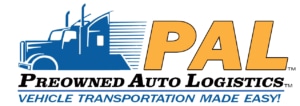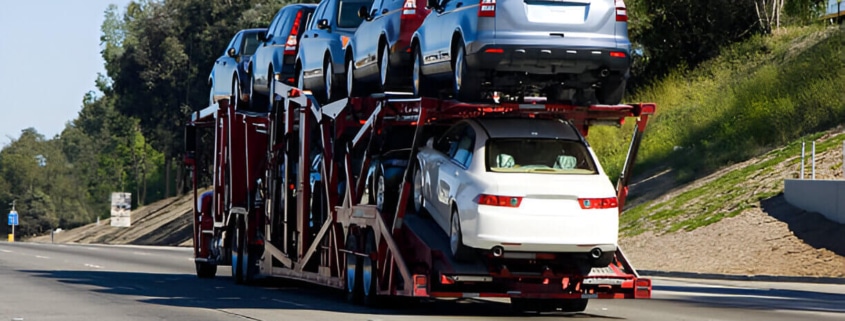What Affects the Cost of Shipping Various Vehicle Types
What Affects the Cost of Shipping Various Vehicle Types
Shipping a little compact car will not cost the same as moving a big motorhome. But why is that, and what other factors can increase the price? Knowing what goes into a vehicle shipping quote before you book can save you money and stress. This is where companies like Preowned Auto Logistics (PAL) deliver by providing you with the whole package, not just fancy marketing – no dicey statements or commitments, just an honest price based on your vehicle and your specific route. Want to dive into what affects car shipping prices regarding vehicle transport services? Let’s go!
Essential Factors That Affect Vehicle Shipping Costs
The final cost of shipping a car is not determined at random; rather, it is the result of several interconnected factors contributing to the logistics of getting the vehicle to the delivery location in a timely and safe manner.
Distance and route complexity
It is well-known that the distance from the pickup point to the final destination can be a significant cost driver. The longer the distance, the more expenses companies have for fuel, driver pay, and more wear and tear on equipment.
According to industry studies, long-haul shipments (to transcontinental areas) may have a lower rate per mile, but the overall cost of shipping increases as the distance increases. For instance, the average rate for a 500-mile shipment might be about $1.50 per mile. The average cost of shipping a 2,500-mile shipment could be $0.75 per mile. The longer distance of 5X (5 times greater distance) accounts for the significant difference in the overall cost of shipping.
| Feature | Scenario 1: Shorter Haul | Scenario 2: Long Haul (Transcontinental) |
| Shipping Distance | 500 miles | 2,500 miles (5 times greater distance) |
| Average Rate | $1.50 per mile | $0.75 per mile (Lower rate per mile) |
| Estimated Total Cost | $750.00 | $1,875.00 (Significantly higher total) |
Route complexity
In addition to the obvious mileage, the route’s complexity significantly impacts cost. It is less expensive to travel to large cities that are conveniently accessible via an interstate highway system. However, when shipping to geographically challenging or remote locations (such as mountainous regions or isolated areas off of major transportation routes), carriers may need to change their primary routes, and some may need freight for logistics. All of these factors increase the carrier’s time and fuel expenses as well as the overall cost of transportation.
Vehicle size and weight
To understand what affects car shipping costs, you must look at the vehicle’s dimensions (length, width, and height) and gross weight. Standard auto transport carriers have limited deck space and must adhere to heavyweight restrictions by the Department of Transportation (DOT).
A compact sedan, for instance, needs less space, but a larger car, such as a van, pickup truck (especially a heavy-duty Ram 3500), or full-size SUV (Chevrolet Suburban), takes up space that could be used by two or more smaller cars. Their weight also impacts the vehicle’s maximum load limit and the carrier’s fuel consumption.
As a result, transporting a larger and heavier vehicle is typically more expensive. Depending on the size and weight increase, this difference can range from $150 to $500 (or more) over a standard vehicle.
Vehicle condition (operable vs. inoperable)
Professional vehicle transport services must evaluate a car’s condition. An “operable” vehicle – one that drives, steers, and brakes by itself – has the logistic advantage of simple boarding and scheduling – the driver can load, unload, and park it!
An “inoperable” vehicle creates logistic complications, involving cars that do not run due to mechanical issues, accident damage, or restoration projects that lack a working powertrain. Transport personnel will need special equipment (usually a winch) and will have additional labor and time to load these vehicles.
Also, usually empowered with other logistic risks from handling non-operational vehicles, the cost typically adds charge (typically $150 to $250, but can vary based on the difficulty of transporting). Clients must accurately describe the condition of their vehicle to receive an accurate estimate and to enable the transport company to plan appropriate resources.
Transport type (open vs. enclosed)
Clients have two primary modalities for vehicle transport, each with distinct cost implications. For clients asking, “How much does it cost to ship a luxury car?” the choice between these vehicle transport services is a primary cost determinant.
Open transport: This is by far the most common and economical way to transport vehicles and accounts for probably 90% of vehicle delivered. Under this mode, cars are shipped on the open deck of a multi-level carrier, where they are vulnerable to damage from the weather and the general risk of the road. Since companies can ship multiple cars at once, it reduces shipping cost making open transport an inexpensive way to move most basic vehicles.
Enclosed transport: On the other hand, if the vehicle requires more protection, i.e., luxury, classic, exotic sports vehicle, or customized paintwork, enclosed transport is the only choice, offering a higher level of protection from the unknowns of the weather, road debris, and dust.
In enclosed transport, the vehicle is shipped in a fully covered trailer, providing that additional protection. This service usually commands a cost that will exceed open transport service pricing by approximately 40% to 60%, depending on the distance and other factors. The quoted price of a $1,200 open transport route is between $1680 and $1920 or more for an enclosed carriage. The additional protection will usually deem the expense a worthy consideration for high-value vehicles.

Pickup and delivery method
The method of pickup and delivery you choose will significantly affect your total car shipping cost, and it is a significant part of what you are paying for:
Door-to-door service
This is the most convenient and typically the preferred service. When a carrier completes a door-to-door pickup, they will pick up the vehicle directly at the requested location (your client’s home or work) and deliver it to the exact address of the requested drop-off location. This requires the least amount of effort from you.
However, you must be aware that commercial car transport trucks are large and require a lot of space to maneuver safely. Suppose, for any reason, the designated pickup or delivery location of the residential or commercial property cannot be easily accessed/approached/identified by the large carrier (i.e., narrow streets, trees that are low hanging, or wires directly in the way, or any specific restrictions from local city specifying that commercial transport trucks shall not enter). In that case, the assigned driver will call you, and together, they will agree to a convenient pickup or delivery location.
Terminal-to-terminal service
Another option, albeit one that is not as frequently used as the door-to-door service, is called terminal-to-terminal service. In this case the responsible party has to deliver the vehicle to either a terminal or designated secured, restricted carrier storage facility, and then collect the same vehicle from the terminal which is being held in relatively the same geographic proximity to the destination city or area.
Depending on the distance between the original and terminal locations, terminal services may offer clients a savings of $75-$150 off the total pickup/delivery. Terminal services effectively allow carriers to consolidate loads by providing a terminal pickup/drop-off, substantially reducing the number of residential locations stops(i.e., where loads are picked up and unloaded, etc.), reducing the transit time between vehicles transporting at the individual carriers’ hubs, reduce the total miles billed each car transported, and ultimately result in a reduced pooled transportation cost.
However, terminal-to-terminal transport is less convenient as you have to transport the vehicle to the terminal yourself, which is now another step in the process at each end of the journey. In addition, not all carriers have widely dispersed terminals across their operational geographical routes.
Time of year and seasonal demand
The vehicle transport services market is particularly susceptible to seasonal changes in consumer demand, and these predictable changes can impact everything from transport prices to carrier availability – a trend also found in other industries dependent on complex logistics and travel plans.
Peak seasons
The summer months – typically between July and August – are peak demand times (often aligned with school breaks, better weather, etc.), resulting in dramatically higher demand for vehicle transport services.
“Snowbird season” is another source of demand spikes. “Snowbird season” describes when a population of residents, usually retirees or seasonal workers, go through a semi-annual mass relocation: to/from cold northern states to warm southern states for winter and in reverse for the spring. Due to volume, peak operational periods consume much of the available carrier capacity, and demand greatly outweighs supply during these times. This imbalance allows carriers to increase their rates, which could also increase your price by $200, $250, $300, $400, $450, or more per vehicle.
Off-peak seasons
Conversely, those who schedule shipments in periods when demand for truck carriers is low (e.g., mid-Autumn (after the summer rush and before the snowbird’s departure] or in late-winter (after the holidays, but before the spring seasonal moves) will often find better prices for their vehicle transport services. This is because truck carriers are genuinely looking to fill the capacity of their transporters and have greater availability. Thus, scheduling personal vehicle shipments in an off-peak period minimizes timing issues while reducing the cost.
Fuel Prices and carrier availability
External market forces are influential components in determining the final cost for vehicle transport services.
- Fuel prices: Significant national or regional fuel price changes usually mean the carrier will implement a fuel surcharge. Surcharges can fluctuate and create a charge passed to the consumer for vehicle transport.
- Carrier availability: Carrier or transportation service pricing is primarily influenced by supply and demand factors. When carriers are plentiful in an area or along a route, and car shipping demand is high, lower prices may be available. However, pricing will likely be high if demand for transportation services exceeds the number of carriers available, particularly if the services are specialized. Knowing these key points can help you understand why and how vehicle shipping prices are affected.
Type of Vehicle and Costs
Understanding shipping cost by vehicle type is essential to get a complete idea of the cost determinants:
- Sedans and compact cars: These fall within a standard size and weight category of vehicles that can easily fit onto standard auto carriers. The transport company can easily load and safely secure sedans and compact cars, utilizing space without specialized handling, so baseline pricing is the most affordable.
- SUVs and pickup trucks: Larger vehicles, like Sport Utility Vehicles (SUVs) or pickup trucks, have higher shipping costs. In addition to the added height and weight, the additional width of larger vehicles may effectively justify shipping costs that use one and a half sedan spaces or, at times, space equaling two standard size sedan vehicles, reducing the total number of vehicles the carrier can transport on each load.
- Motorcycles: Motorcycle shipping differs from four-wheeled vehicle shipping. Carriers must secure motorcycles with crating with locking devices or special soft-tied downs and chocking systems. In this controlled environment, motorcycle movement in transit is minimized and controlled to avoid damage. It is more complicated. Because his special vertical shipment differs from a standard four-wheeled car shipping process and adds complexity, consider the equipment, expertise, and cost structure.
- RVs and oversized vehicles: Large RVs, buses, and oversized vehicles present inherent shipping complexity; often, these vehicles need specialized carriers. For example, flatbed carriers or lowboy trailers are designed for the weight and dimensions of RVs and oversized vehicles. State regulations require oversize permits for large loads and in some cases you may require escort vehicles (pilot cars), which double the transportation cost.
- Luxury, exotic, and classic cars: Owners of high-value automobiles like high-end sedans, exotic sports cars, and irreplaceable classics often want the maximum protection available. Therefore, they will prefer using enclosed carrier to transfer the vehicle. Enclosed carriers often provide protection from the weather and harmful debris and prying eyes. It is a premium service with the potential for added insurance and specialized handlers for fragile or high-performance vehicles.

How Preowned Auto Logistics Offers Cost-Effective Solutions
Preowned Auto Logistics (PAL) resolves the complexities of vehicle shipping by providing transparent, tailored, and affordable solutions designed to meet clients’ diverse needs and budgets.
Custom quotations based on vehicle type and route
Preowned Auto Logistics understands that several factors influence car shipping prices simultaneously. Therefore, they offer customized quotes considering many aspects of the vehicle being shipped, such as make, model, measurements, weight, and operability. PAL also considers the exact pickup and drop-off locations, the complexity of the route, and other client-imposed parameters. A careful assessment of these factors means the quotation reflects the fundamental cost drivers, which is how PAL can offer fair and transparent pricing for all vehicle transport services.
Flexible shipping options to fit budget and protection requirements
PAL gives their clients a choice of shipping options, primarily open and enclosed transport, to allow them to balance their budgets with their desired level of vehicle protection. PAL’s representatives help clients navigate and understand the advantages of each option, assisting them in making better-informed choices. For example, while open transport is still a cost-effective option for shipping any standard car, PAL ensures clients understand when they should consider enclosed transport for protecting high-end, classic, or delicate vehicles. This flexibility allows clients to only pay for the services warranted by their specific vehicle type shipment.
All-inclusive pricing with no hidden fees
A key part of PAL’s approach is the commitment to transparent, all-inclusive pricing. The quotes they provide aim to include all of the anticipated costs involved with the shipment, including standard carrier insurance and fuel surcharges. PAL strives to eliminate worries about hidden or unexpected fees, ensuring clients know the full financial scope of their vehicle transport up-front.
Experience handling all types of vehicles, from motorcycles to RVs
PAL has a thoroughly vetted and experienced network of carriers with different vehicle transport specialties. When a client wants to ship a motorcycle that needs to be secured carefully, a regular sedan, a large SUV, a high-value luxury car needing enclosed transport, or even an oversized RV that requires permits and specialized equipment, PAL assures that the client has access to experts qualified to transport the vehicle types mentioned above. This expert handling assures all vehicle types will receive appropriate care and arrive safely.
Tips to manage and reduce shipping costs
- Book in advance: Typically, the worst way to proceed with shipping is to book at the last minute and pay for the rate attached. Don’t allow this to happen; plan.
- Be flexible with your pickup and delivery date & time: Generally speaking, the more flexible you can be around the arrival and departure dates and times, the better the shipping deal you will receive.
- Please choose the right mode of transport for the value of your vehicle: The mode of transport you choose should align with the value of the car and the protection it requires. A valuable vehicle may benefit from enclosed transport, whereas ordinary cars may only need the regular open carrier, which is typically cheaper.
- Ask for discounts: Be sure to ask about any available discounts, particularly if you’re shipping multiple vehicles or if you are a repeat customer.
Conclusion
In summary, several factors influence your auto shipping costs, including the type and size of your vehicle, how far you are transporting it, how you are transporting it (ex., open versus enclosed carrier), the time of year, and fuel prices. The best way to understand the shipper’s costs is to have a firm grasp of the variables that impact shipping so that you can proactively predict and manage your transportation costs.
Choosing an experienced and reputable shipping company to help you move your vehicle in the smoothest, safest, and most reliable manner possible is imperative. A well-established company like PAL has the greater experience to fulfill many auto shipping requirements and the peace of mind that comes with using a trusted company.
If you want a more precise sense of the costs for your unique situation, we encourage you to get a custom quote.




